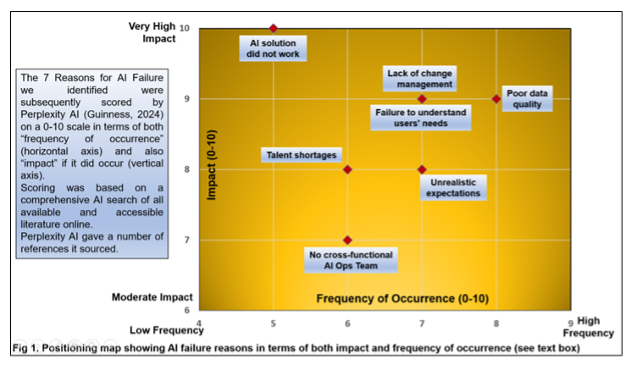Why workforce evolution demands immediate action
03 Feb 2025
Blog

This blog covers:
- The dual challenges facing white and blue-collar workforces
- Critical success factors for AI implementation
- How Integrated Business Planning enables workforce transformation
Having attended numerous executive events across Europe recently, we've observed a striking pattern: workforce challenges have become immediate rather than future concerns, creating unprecedented pressure from both ends.
In the white-collar sphere, we're seeing an intriguing dichotomy. Some organizations push for a return to office-based work, citing the need for informal interactions and maintaining corporate culture. Meanwhile, others embrace fully remote, globalized talent pools, creating centralized roles that can be performed from anywhere. Yet talent is becoming increasingly scarce, with companies competing intensely for the best minds.
The blue-collar situation is even more pressing. Companies face critical operational challenges with an aging workforce and increasing retirement rates. Several organizations have shared their struggles with imminent labor shortages. The political climate across Europe and beyond makes it increasingly challenging to source international labor, forcing companies to look for alternative solutions.
While many organizations turn to AI and automation as potential solutions, successful implementation requires more than purchasing technology. Our experience shows that AI projects often fail due to fundamental issues with data quality and basic process management.

Why AI Projects Fail: Lessons from New Product Development by Dr. Robert G. Cooper
Before embarking on ambitious AI initiatives, organizations need to ensure their foundational data management processes are robust. This means implementing clear data governance structures, establishing data quality metrics, and creating ongoing data maintenance and validation processes.
Planning for transformation
Successfully implementing AI requires a disciplined approach similar to new product development. Organizations should begin with a comprehensive technical feasibility assessment to validate the technology and potential vendors. This should be followed by developing realistic business cases for implementation timelines and resource requirements.
Clear success metrics must be established early, with regular review points throughout the implementation process. Finally, post-implementation evaluation ensures learnings are captured and applied to future initiatives.
Through structural forward-looking processes, organizations can effectively map their workforce needs over the next three to five years, identifying critical gaps and opportunities for technological intervention. This longer-term view is essential because implementing AI and automation solutions requires careful preparation and strategic alignment.
The most successful organizations continuously track demographic trends in their workforce to anticipate future needs and challenges. They maintain detailed assessments of critical skill gaps across the organization, enabling proactive recruitment and development programs.
Their technology implementation timelines are carefully coordinated with workforce planning, ensuring smooth transitions. They also maintain robust monitoring systems to assess the effectiveness of various workforce initiatives. Perhaps most importantly, they ensure changes are coordinated effectively across different business functions.
The planning process must balance multiple factors: the pace of technological change, the rate of workforce aging, training and development needs, and the financial implications of various interventions.
Blending perspectives from different generations
Organizations must consider carefully how different generations within the workforce interact with technology. Younger employees often bring valuable digital expertise, while experienced staff contribute crucial business acumen. The most successful organizations find ways to blend these perspectives, creating environments where technological innovation and traditional business knowledge strengthen each other.
Moreover, transformation efforts must maintain business performance during the transition. Companies need to ensure service levels, quality standards, and operational efficiency don't suffer while implementing new technologies and working methods.
Through structured planning processes, successful organizations develop comprehensive approaches to change. They carefully prioritize areas for automation based on business impact and implementation feasibility. Their training programs are targeted to specific workforce needs and technological requirements.
The pace of change is carefully managed to prevent organizational disruption. Implementation effectiveness is continuously monitored through clear metrics and regular reviews. Strategies are adjusted based on measured results and emerging challenges.
Success requires careful coordination between human resources, operations, IT, and finance functions. IBP provides the framework for this coordination, ensuring that all parts of the organization move forward together.
Today's workforce challenges demand immediate action but require careful, strategic planning. Those who delay risk finding themselves on the wrong side of an increasingly wide technological divide, struggling to compete in a rapidly evolving business landscape.
However, with proper planning and implementation through IBP, organizations can turn these challenges into opportunities for growth and innovation. The secret lies in maintaining balance: embracing technological advancement while preserving crucial human knowledge, implementing change while maintaining stability, and building future capabilities while delivering current performance. However, it is imperative to get the basics right first.
Ready to lay the groundwork for lasting success while building future capabilities? Explore a range of IBP resources written by Oliver Wight Partners or contact us directly to discover how we can help your business thrive in an ever-changing world.
Author(s)
-

-
